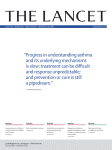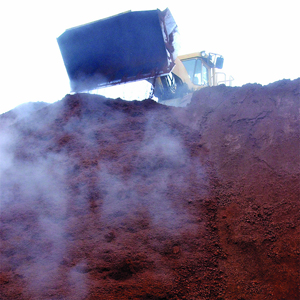Phase Three Risk Factors
In Phase Three risk factors have been explored using the environmental questionnaire. Many themes have been explored. Those which have been published are summarised below.
Paracetamol (Acetaminophen)
Previous reports suggested that exposure to paracetamol during intrauterine life, childhood, and adult life may increase the risk of developing asthma. In ISAAC Phase Three in 6-7-year-old children from 73 centres in 31 countries [Beasley 2008] the use of paracetamol for fever in the first year of life was associated with an increased risk of asthma symptoms when aged 6 - 7 years (OR 1.46 [95% CI 1.36 - 1.56]). Current use of paracetamol was associated with a dose-dependent increased risk of asthma symptoms (1.61 [1.46 - 1.77] and 3.23 [2.91 - 3.60] for medium and high use vs no use, respectively). Use of paracetamol was similarly associated with the risk of severe asthma symptoms, with population-attributable risks between 22% and 38%. Paracetamol use, both in the first year of life and in children aged 6 - 7 years, was also associated with an increased risk of symptoms of rhinoconjunctivitis and eczema. In the analysis of adolescents from 113 centers in 50 countries the recent use of paracetamol was associated with an exposure-dependent increased risk of current asthma symptoms (OR, 1.43 [95%CI 1.33 - 1.53] and 2.51 [95% CI 2.33 - 2.70] for medium and high versus no use, respectively). Paracetamol use was also associated with an exposure-dependent increased risk of current symptoms of rhinoconjunctivitis and eczema [Beasley 2011]. While these findings might indicate causation, they could be as a result of either reverse causation, for example if paracetamol were prescribed because of respiratory symptoms; or they could be a result of confounding by indication, for example if paracetamol were prescribed for chest infections, which were in turn associated with subsequent respiratory disease. Further research is needed, including randomised controlled trials, into the long-term effects of paracetamol in childhood.
Antibiotics
The hygiene hypothesis postulates that growing up in a more hygienic environment with less microbial exposure may enhance atopic (TH2) immune responses, whereas microbial pressure would drive the response of the immune system - which is known to be skewed in an atopic TH2 direction during fetal and perinatal life - in a TH1 direction and away from its tendency to develop atopic immune responses. This would protect against atopy and allergic (but not nonallergic) asthma. A corollary of the hygiene hypothesis is that antibiotic use may increase the risk of asthma by reducing the protective effect of microbial exposure, for example, through disruption of the normal gut microbiota This was explored in Phase Three [Foliaki 2009] in a total of 71 centers in 29 countries. Reported use of antibiotics in the first year of life was associated with an increased risk of current asthma symptoms (wheezing in the previous 12 months) with an OR adjusted for risk factors of 1.70 (95% CI, 1.60-1.80) when adjusted for other risk factors for asthma. Similar associations were observed for severe asthma symptoms (OR, 1.82; 95% CI, 1.67-1.98), and asthma ever (OR, 1.94; 95% CI, 1.83-2.06). Use of antibiotics in the first year of life was also associated, but less strongly, with increased risks of current symptoms of rhinoconjunctivitis (OR, 1.56; 95% CI, 1.46-1.66) and eczema (OR, 1.58; 95% CI, 1.33-1.51). This association between antibiotic use in the first year of life and current symptoms of asthma, rhinoconjunctivitis, and eczema in children 6 and 7 years old requires further research to determine whether the observed associations are causal or are a result of of reverse causation, for example if antibiotics were prescribed because of respiratory symptoms; or they could be a result of confounding by indication, for example if antibiotics were prescribed for chest infections, which were in turn associated with subsequent respiratory disease.
Truck traffic exposure
Associations between traffic pollution on the street of residence and a range of respiratory and allergic outcomes in children have been reported in developed countries, but little has been known about such associations in developing countries. In Phase Three frequency of truck traffic on the street of residence was positively associated with the prevalence of symptoms of asthma, rhinoconjunctivitis, and eczema with an exposure - response relationship [Brunekreef 2009]. Odds ratios for “current wheeze” and “almost the whole day” versus “never” truck traffic were 1.35 (95% CI, 1.23 - 1.49) for 13- to 14-year-olds and 1.35 (195% CI,.22 - 1.48) for 6- to 7-year-olds. These findings that higher exposure to self-reported truck traffic on the street of residence is associated with increased reports of symptoms of asthma, rhinitis, and eczema in many locations in the world require further investigation in view of increasing exposure of the world’s children to traffic.




